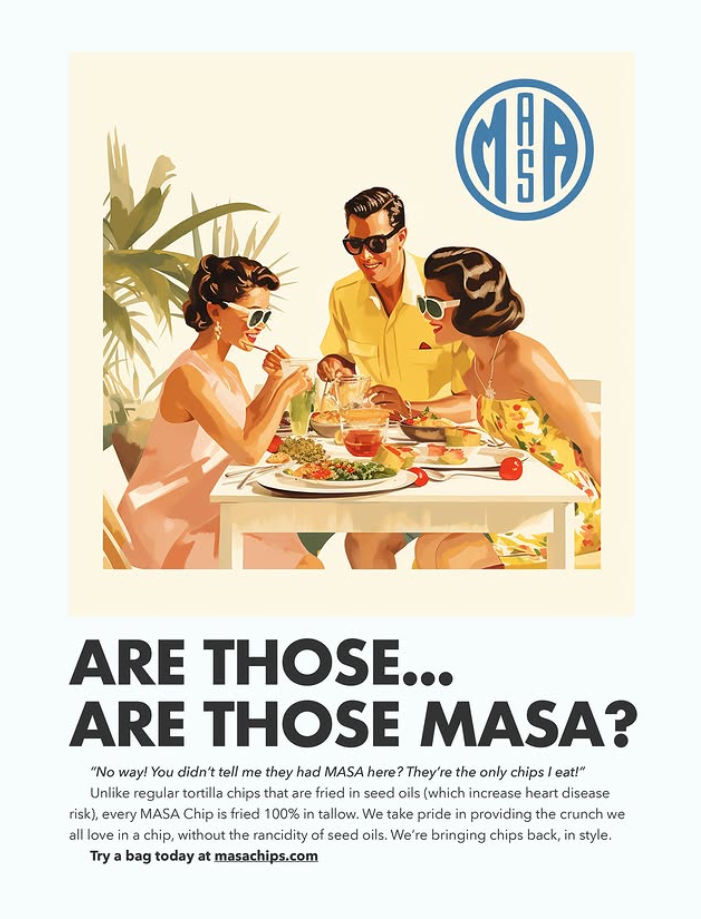
Cowmaxxing, Real-Food, and Avocado Oil Reform the F&B Marketing
The food and beverage industry is going through a phase where consumers push for ‘real food’ on their plates, and that’s how the Cowmaxxing era is blasting the food aisle.
Not just ‘cowmaxxing’ but also the inclusion of avocado oil, removal of food dye, and a wave of “clean label” demands have put marketers in the middle of a raw deal. This isn’t just some wellness trend TikTok has pushed forward with choreographed dances and skits. Instead, it’s an intersection of politics, culture, and consumer rebellion.
Cowmaxxing is part of ‘MAHA’ (Make America Healthy Again). Robert F. Kennedy Jr., the US Secretary of Health and Human Services, has been promising to regulate “Big Food” since the new American president came into power. And this isn’t just noise. It’s already reshaping aisles, labels, and even billion-dollar advertising strategies.
So, let’s dive in and notice what’s changing—and what more there is to seek.
A wellness trend, driven by influencers and food biz
First, let’s define Cowmaxxing. Originally floating around in wellness forums and fitness communities, the term describes the consumption of high-quality, grass-fed, unprocessed beef and dairy as part of a “return to real food” movement. It’s part health philosophy, part political slogan, and fully a backlash against decades of processed food dominance.
Robert F. Kennedy Jr. has framed MAHA as a cultural and health crusade, wrapping it as a broader promise to “take America off seed oils, synthetic dyes, and lab-concocted calories.” His speeches strike the same notes as the organic food boom of the early 2000s—but this time, the government isn’t just cheerleading. It’s regulating.

Influencers and micro-creators on TikTok, Instagram, and YouTube have been quick to capitalize. From keto coaches frying steaks in avocado oil to wellness moms teaching their kids the difference between “fake cheese” and “real cheese,” the narrative is spreading faster than the last oat milk craze.
Food startups, too, smell opportunity. Small brands that once fought for shelf space are suddenly being courted by major grocers, who don’t want to get left behind as “real food” becomes the new shelf divider.
For some, Cowmaxxing isn’t just about diet, it’s a cultural stand. Much like how “Buy Local” or “Farm to Table” became moral and economic choices, choosing grass-fed beef or dye-free ketchup is both a meal and a statement. And brands, whether startups or legacy giants, are cashing in.
MAHA, the headache for food giants
While startups celebrate, Big Food is sweating. MAHA has become a migraine for industry titans like PepsiCo, Nestlé, and Kraft Heinz. For decades, they thrived on scale: cheaper seed oils, artificial dyes, and flavor enhancers kept margins fat. But under MAHA’s shadow, those ingredients have been put on notice.
Take PepsiCo’s Frito-Lay division. It recently announced a phase-out of seed oils in certain snack lines, with some Lays chips now proudly fried in avocado oil. Consumers cheer, but internally, it’s a cost bomb. Avocado oil can cost three to four times more than seed oils, making scalability a nightmare.
Kraft Heinz, meanwhile, confirmed it is stripping artificial food dyes from its ketchup. That iconic red squirt will now come from natural sources. For a brand that has marketed consistency for a century, this is both a bold leap and a dangerous gamble. Change the taste or texture by even a notch, and you risk alienating millions of loyal buyers.
Then there’s the supply chain drama. Farmers, packagers, distributors, every link is being forced to pivot. Avocado oil production is booming but still concentrated in limited regions.
Grass-fed beef supply chains are fragile, often running up against environmental and ethical debates about cattle farming. Big Food is learning that “healthy” is not just a marketing buzzword, it’s a logistical headache.
Marketing and advertising are in pickle with Cowmaxxing
Here’s the big question: how do you advertise a chip or a burger in the Cowmaxxing, MAHA-driven era?
Marketers are stuck between a rock and a hard place. If brands advertise their products as “healthy,” they risk opening the door to lawsuits, regulatory scrutiny, or consumer backlash if the claims don’t hold up. If they stay quiet, they risk losing relevance in a marketplace where every other brand is flexing its clean-label creds.
Ad agencies are already fielding unusual briefs. PepsiCo wants to make avocado oil chips sound indulgent but not “diet food.” Heinz wants ketchup to stay fun while being dye-free.
Legacy slogans like “Betcha Can’t Eat Just One” suddenly clash with MAHA’s sobering promises.
The advertising playbook is being rewritten. Expect to see a shift toward heritage branding (“We’ve always believed in real food”), influencer-driven campaigns (“See me eat this clean burger in real time”), and ingredient transparency ads that zoom in on avocado orchards or grass-fed pastures.
But don’t be fooled, behind every “real food” ad is a boardroom trying to reconcile two contradictory truths: wellness sells, but so do cheap snacks. It’s a balancing act between moral messaging and mass-market reality.
Well, wellness trends matter, but risky business brings risks
Wellness trends matter because they tap into three cultural hot buttons: trust, transparency, and anti-corporate sentiment. Consumers are tired of fine print and “may contain” disclaimers. They want foods that look like what they are. Real ketchup, real chips, real beef.
Transparency isn’t just about labels anymore—it’s about identity. When Heinz says, “no more dyes,” it signals to shoppers: We’re listening. We’re changing. That creates loyalty. In an age where consumers feel increasingly alienated by “Big Anything” (Big Tech, Big Pharma, Big Food), loyalty is gold.
But wellness is still a risky business. Consumers are fickle. Today it’s avocado oil; tomorrow it could be sunflower oil. Today it’s grass-fed beef; tomorrow it could be lab-grown meat. Brands that overhaul supply chains and marketing campaigns risk betting billions on a trend that could be old news in three years.
There’s also the cost trap. Healthier inputs drive up prices. A family of four shopping for avocado oil chips and dye-free condiments could see their grocery bill balloon. That opens another risk: alienating middle-class consumers who can’t afford “real food” branding. If the MAHA wave starts looking elitist, it could face a backlash just as fierce as the one that toppled diet sodas and low-fat yogurt fads.
Ultimately, the F&B industry is walking a tightrope. Ignore wellness and risk irrelevance. Embrace it and risk collapse under costs and shifting consumer winds.
Cut to the chase
Cowmaxxing, avocado oil, and real food aren’t just flavor-of-the-month trends. They’re part of a bigger cultural and political realignment reshaping America’s relationship with what it eats. For food brands, the stakes couldn’t be higher.

